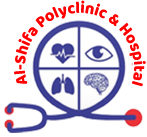A brief inflammation of the synovium, the lining of the hip joint, is called transient tenosynovitis, sometimes referred to as toxic synovitis or transitory synovitis. Children between the ages of 3 and 8 are the most typically affected by this ailment, which frequently results in hip pain and limping in this age group. Although the precise origin is uncertain, a viral infection frequently comes before it.
Pathophysiology and Aetiology
Although the precise cause of transitory tenosynovitis is unknown, a number of factors are thought to be involved:
- Viral Infections: Patients frequently report having upper respiratory infections in their medical history.
- Trauma: Small cuts to the leg or hip may be a contributing factor.
- Hypersensitivity Reactions: In certain situations, allergic reactions could be involved.
Joint swelling, discomfort, and limited range of motion are brought on by an increase in synovial fluid as a result of synovial inflammation.
Clinical Presentation or Symptoms
Typically, patients with transitory tenosynovitis show up with:
- Acute Hip Pain: Usually confined to the groin region, however it can also spread to the knee or thigh.
- Limping: A discernible limp or inability to put weight on the afflicted leg.
- Restricted Range of Motion: Especially in hip abduction and internal rotation.
- Recent Viral Illness: A history of a recent upper respiratory infection or other viral symptoms is considered recent viral illness.
Diagnosis
Although mostly clinical, the diagnosis can also be backed up by:
- Physical Examination Findings: Hip joint soreness and limited range of motion.
- Imaging: An effusion in the hip joint may be seen using ultrasound. Although X-rays are usually normal, they might be used to rule out other illnesses.
- Laboratory Examinations: Although minor elevations in inflammatory markers (ESR, CRP) may be observed, blood tests are often normal.
Differential Diagnosis
It’s critical to distinguish temporary tenosynovitis from more dangerous illnesses:
- Septic Arthritis: An infection caused by bacteria in the joint that needs to be treated right away.
- Legg-Calvé-Perthes Disease: Femoral head avascular necrosis.
- Slipped Capital Femoral Epiphysis (SCFE): A disorder where the femoral head slides off the femur’s neck.
Treatment
Rest and Adjustment of Activities
- Rest: To lessen the strain on the hip joint, encourage the youngster to take it easy and refrain from weight-bearing activities.
- Activity Modification: Reduce the amount of physical activity that can make your symptoms worse. As the discomfort lessens, gentle activities can be resumed.
Pain Management
- NSAIDs, or Nonsteroidal Anti-Inflammatory Drugs: Acetaminophen and ibuprofen are two examples of medications that can help lower pain and inflammation.
- Quantity: Pay attention to the dosage that is advised based on the child’s age and weight.
- Frequency: Give the drug on a regular basis to ensure steady pain relief, particularly in the beginning.
Compromise Measures
- Cold Packs: Using cold packs on the afflicted hip can help lessen discomfort and swelling.
- Application Time: 15 to 20 minutes, multiple times a day.
- Take Care: To avoid getting the ice pack in direct touch with your skin, always wrap it in a cloth.
- Warm Compresses: Warm compresses or a warm bath can help relieve hip pain in certain kids by easing the muscles surrounding the joint.
Monitoring and Follow-Up
- Schedule Follow-Up Appointments: With a medical professional to keep an eye on the child’s development and make sure any symptoms are going away.
- Symptom Monitoring: Document the child’s symptoms, such as their level of pain, their tolerance to certain activities, and any modifications to their condition.
Reassurance
- Education: Explain to the parents and the child (if suitable) that the illness is benign and self-limiting.
- Reassurance: Tell them that there are usually no long-term problems and that the illness usually goes away in a few weeks.
Gradual Resumption of Activity
- Gradual Increase: Reintroduce physical activities gradually after symptoms start to improve.
- Pacing: To avoid further damage or symptom recurrence, promote a gradual increase in activity levels.
When to Seek Further Medical Attention
- Worsening Symptoms: Get additional medical attention if your pain or symptoms get worse or don’t get better in seven to ten days.
- Infection Warning Signs: Keep an eye out for infection symptoms, such as elevated fever, increased redness, or warmth, as these could point to a more serious illness like septic arthritis.
- Persistent Limp: Additional testing may be required to rule out other conditions if the kid still limps or has trouble bearing weight after a few weeks.
Physical Therapy, if Required
- Referral: A physical therapist referral may be helpful in rare instances if problems continue.
- Activities: Strengthening exercises and mild range-of-motion exercises can aid in the return of normal hip function.
Conclusion
Usually affecting children between the ages of 3 and 8, transient tenosynovitis is a brief inflammation of the synovium in the hip joint, frequently brought on by a viral infection. This syndrome is usually benign and self-limiting and is characterised by acute hip discomfort, limping, and reduced range of motion. The diagnosis is made based on the patient’s clinical presentation, and it may be confirmed by imaging studies and laboratory testing to rule out more serious illnesses such as SCFE, Legg-Calvé-Perthes disease, and septic arthritis. The main goals of treatment are pain relief, rest, and a gradual return to normal activities. When given the right care, the majority of kids recover completely in a matter of weeks with no long-term issues. To effectively manage this disease, consistent observation and consolation are necessary.
